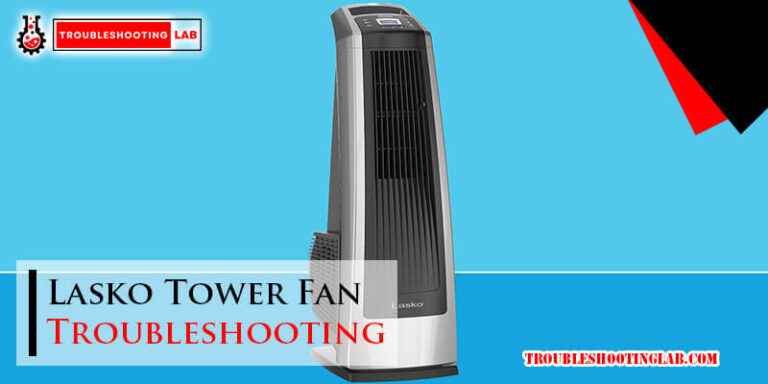Hunter Ceiling Fan Troubleshooting: Quick Fixes & Tips
If your Hunter ceiling fan is not working, check for blown fuse, faulty remote, or incorrect wiring. Troubleshoot the issue systematically to identify and resolve the problem.
Hunter ceiling fans are a popular choice for many homeowners due to their quality and reliability. However, like any electrical appliance, they can encounter issues that require troubleshooting. Whether the fan is not turning on, making unusual noises, or the lights are not working, it is essential to identify and address the problem promptly.
In this guide, we will explore common troubleshooting steps to help you diagnose and fix issues with your Hunter ceiling fan. By following these steps, you can potentially resolve the problem and restore your fan to proper working condition.
Initial Checks Before Troubleshooting
Before troubleshooting your Hunter ceiling fan, conduct initial checks. Ensure the power is off, check connections, and inspect for any visible damage. Regular maintenance can prevent common issues and ensure optimal fan performance.
Assessing Power Supply And Connectivity
Before diving into troubleshooting your Hunter Ceiling Fan, the first step is to assess the power supply and connectivity. Ensure that the fan is properly connected to the power source and that the circuit breaker is not tripped. You can also check for loose connections or damaged wires that may be affecting the fan’s performance.
Examining Fan Blade Movement
Another initial check that you can perform before troubleshooting is examining the fan blade movement. If the blades are not rotating properly, it can be due to a variety of reasons such as a faulty motor, damaged fan blades, or a buildup of dirt and debris. In such cases, cleaning the blades or replacing them may solve the issue.
Some other things to check include the remote control or wall switch, if applicable, to ensure that they are functioning properly. Additionally, make sure that the fan is properly balanced and that the blades are not bent or warped.
By performing these initial checks, you can save time and effort in troubleshooting your Hunter Ceiling Fan. However, if the issue persists, it may be time to consult a professional or contact Hunter Fan Company for further assistance.
Common Issues With Hunter Ceiling Fans
When troubleshooting Hunter ceiling fans, it’s important to be aware of common issues that may arise. Addressing these problems promptly can help ensure your fan operates efficiently. Below are some of the typical issues you may encounter with Hunter ceiling fans.
Fan Not Turning On
- Check power source and circuit breaker.
- Ensure fan is securely connected.
- Inspect for any burnt-out bulbs.
Irregular Fan Movements
- Balance fan blades using a balancing kit.
- Tighten any loose screws or bolts.
- Check for any obstructions that may be causing uneven rotation.
Remote Control Malfunctions
| Possible Cause | Solution |
|---|---|
| Dead batteries | Replace batteries in the remote control. |
| Signal interference | Reposition the receiver to improve signal reception. |
| Reset required | Reset the remote control and reprogram it. |
By addressing these common issues with Hunter ceiling fans promptly, you can ensure optimal performance and longevity of your fan.
Lighting Problems And Solutions
If you’re facing lighting problems with your Hunter ceiling fan, there are a few troubleshooting steps you can take. First, check the voltage and the regulator, and then test the fix. If the fan is not working but the light is, it could be due to a blown fuse, damaged motor, or improper installation.
Fan Working But Lights Not Functioning
If your ceiling fan is operational, but the lights are not working, there could be several underlying issues causing this problem. It’s important to troubleshoot the light kit to identify and resolve the specific issue.
Troubleshooting Light Kit Issues
When facing lighting problems with your Hunter ceiling fan, it’s crucial to follow a systematic troubleshooting process to pinpoint the cause of the malfunction. This will help in determining the most appropriate solution for restoring the functionality of the lights.
Replacing Blown Fuses
If the lights on your Hunter ceiling fan are not functioning, it could be due to a blown fuse. Replacing the blown fuse is a relatively simple fix that can restore the lighting functionality of the fan.
Fixing Remote Control Complications
Hunter ceiling fans are designed to provide comfort and convenience, but issues with the remote control can disrupt their functionality. Troubleshooting and fixing remote control complications can help restore the smooth operation of your ceiling fan. Here are some essential steps to address remote control issues effectively.
Resetting The Remote
If your Hunter ceiling fan remote is not responding, a simple reset might resolve the problem. Follow these steps to reset the remote:
- Locate the dip switches on both the remote and the fan’s receiver.
- Ensure that the dip switches on the remote and receiver are set to the same frequency and position.
- Toggle the dip switches on the remote and receiver if they are not synchronized.
- Test the remote to see if it now controls the fan and its features.
Syncing Remote With Ceiling Fan
If the reset does not solve the issue, you may need to sync the remote with the ceiling fan. Here’s how to do it:
- Turn off the power to the ceiling fan at the circuit breaker to prevent electrical hazards.
- Press and hold the fan’s power button for at least 10 seconds to clear any residual power.
- Press and hold the fan’s power button again to restore power and sync the remote with the fan.
- Test the remote to ensure it now controls the fan and its functions accurately.
Motor And Capacitor Concerns
When it comes to troubleshooting your Hunter ceiling fan, motor and capacitor concerns are common issues that can affect the fan’s performance. Identifying motor problems and testing and replacing capacitors are crucial steps in resolving these issues.
Identifying Motor Problems
If your Hunter ceiling fan is experiencing motor issues, there are a few signs to look out for. These may include unusual noises, inconsistent speed, or complete failure to operate. It’s important to visually inspect the motor for any signs of damage or wear and tear, as well as ensuring that the fan blades are clean and free from debris.
Testing And Replacing Capacitors
The capacitor is an essential component of the ceiling fan’s motor, responsible for starting and regulating the fan’s speed. To test the capacitor, you can use a multimeter to check for continuity and ensure that it is functioning properly. If the capacitor is faulty, replacing it with a new one is often the most effective solution to restore the fan’s functionality.
Ceiling Fan Installation Errors
When it comes to installing a ceiling fan, errors can occur that may lead to operational issues. It’s important to address these errors to ensure your ceiling fan functions properly. Below, we’ll discuss common installation mistakes and how to correct them.
Correcting Wiring Mistakes
One common error during ceiling fan installation is wiring mistakes, which can lead to malfunctions. Make sure to double-check the wiring connections to ensure they are secure and properly connected. If you encounter any wiring issues, consult the installation manual or seek professional assistance to rectify the problem.
Secure Mounting To Prevent Vibrations
Improper mounting of the ceiling fan can result in unwanted vibrations, causing noise and potential damage. Ensure that the fan is securely mounted to the ceiling joist or support structure using the appropriate mounting hardware. This will help prevent vibrations and ensure smooth operation of the fan.
Maintenance Tips For Hunter Ceiling Fans
Proper maintenance is essential to keep your Hunter ceiling fan running smoothly and efficiently. By following these maintenance tips, you can ensure your fan operates at its best.
Regular Cleaning Routines
- Dust the blades regularly: Use a microfiber cloth or a gentle duster to remove dust buildup on the fan blades.
- Clean the motor housing: Wipe down the motor housing with a damp cloth to prevent dirt accumulation.
- Check and tighten screws: Inspect the fan for any loose screws and tighten them to prevent rattling noises.
Lubricating Moving Parts
- Lubricate the bearings: Apply a few drops of oil to the bearings to keep the fan running quietly.
- Check the pull chain: Ensure the pull chain moves smoothly and lubricate it if needed to prevent sticking.
- Inspect the downrod: Check the downrod for any signs of rust or corrosion and lubricate it to maintain functionality.
Advanced Troubleshooting Techniques
To troubleshoot a Hunter ceiling fan, start by checking the voltage, then remove the voltage regulator and connector for testing. If the fan isn’t working, potential causes include issues with the remote control, wall control, wiring, or a blown fuse.
Inspect the fan blades and motor for wear and tear, and tighten any loose screws or bolts to ensure proper functioning.
Advanced Troubleshooting Techniques for Hunter Ceiling Fans
Ceiling fans are a great addition to any home, providing both cooling and lighting solutions. However, like any electrical appliance, they can experience problems and breakdowns. Basic troubleshooting techniques such as checking the power source, remote control, and wiring connections are usually enough to diagnose and fix the issue. But if these steps fail, advanced troubleshooting techniques can help identify and resolve more complex problems. In this article, we will discuss advanced troubleshooting techniques for Hunter ceiling fans, including voltage regulator check and handling thermal limiter issues.
Voltage Regulator Check
One of the most common problems with Hunter ceiling fans is a malfunctioning voltage regulator. The voltage regulator controls the fan’s speed and regulates the electrical current. If the voltage regulator is not working correctly, the fan may not operate at the desired speed or may not work at all. To check the voltage regulator, you will need a voltage meter. Follow these steps:
- Turn off the power to the ceiling fan by switching off the circuit breaker.
- Remove the voltage regulator cover and disconnect the wires from the regulator.
- Set the voltage meter to the AC voltage setting and touch the two probes to the wires connected to the voltage regulator.
- Turn the power back on to the ceiling fan and adjust the fan speed to the highest setting.
- Check the voltage meter reading. The voltage should be within the range specified in the fan’s manual. If the voltage is outside the specified range, replace the voltage regulator.
Handling Thermal Limiter Issues
Another common problem with Hunter ceiling fans is thermal limiter issues. The thermal limiter is a safety device that protects the fan’s motor from overheating. If the thermal limiter is activated, the fan will stop working until it cools down. Over time, the thermal limiter can become faulty and cause the fan to stop working altogether. Here’s how to handle thermal limiter issues:
- Turn off the power to the ceiling fan by switching off the circuit breaker.
- Remove the ceiling fan’s housing cover and locate the thermal limiter.
- Check the thermal limiter’s wiring connections for any signs of damage or corrosion. If you find any issues, replace the thermal limiter.
- If the wiring connections are intact, use a multimeter to test the thermal limiter’s continuity. If the thermal limiter does not show continuity, replace it with a new one.
- If the thermal limiter is functioning correctly, check the motor and the fan blades for any signs of damage or wear and tear. Clean the blades to ensure they are not clogged with dust or debris, and tighten any loose screws or bolts.
By following these advanced troubleshooting techniques, you can identify and resolve more complex issues with your Hunter ceiling fan. However, if you are not comfortable performing these tasks yourself, it’s always best to consult a professional electrician or a licensed technician. Remember, safety should always be your top priority when dealing with electrical appliances.
When To Seek Professional Help
While troubleshooting your Hunter ceiling fan, there are instances when seeking professional help is necessary. Here are situations where it’s best to call in the experts:
Complex Electrical Faults
When dealing with intricate electrical issues beyond basic fixes like changing light bulbs or cleaning blades, it’s advisable to consult a professional electrician to avoid safety hazards.
Warranty And Repair Services
If your Hunter ceiling fan is still under warranty or requires specialized repair services, reaching out to authorized technicians ensures the problem is addressed correctly without voiding any warranties.
Frequently Asked Questions
Is There A Reset Button On A Hunter Ceiling Fan?
Yes, there is a reset button on a Hunter ceiling fan.
Why Won’t My Hunter Ceiling Fan Work?
Possible reasons your Hunter ceiling fan won’t work could be issues with the remote control, wall control, incorrect wiring, broken switch, or capacitor. Check these components for problems and consider seeking professional help for troubleshooting and repairs.
Why Is My Ceiling Fan Not Working But The Light Works?
If the ceiling fan lights are working but the fan itself is not, the most likely issue is that the fuse has blown. Ceiling fans have a built-in fuse that helps to protect the motor from power surges. Over time, this fuse can become damaged and need to be replaced.
Check the fuse and replace it if necessary to get the fan working again.
Why Did The Ceiling Fan Suddenly Stop Working?
The ceiling fan may have stopped due to a blown fuse, damaged motor, or loose connections. Regular maintenance can prevent issues.
Conclusion
Troubleshooting your Hunter ceiling fan is essential for maintaining its functionality. From checking the voltage to inspecting the motor, proper maintenance is key. Be proactive in addressing issues promptly to ensure your fan operates smoothly and efficiently for years to come.







Lights blink constantly.
If the lights on your Hunter ceiling fan are constantly blinking, it could be due to a few possible issues. Start by checking if the bulbs are securely screwed in and are compatible with the fan. If they are, the issue might be related to a loose connection or a wiring problem. Make sure the power is off and inspect the wiring for any loose or damaged connections. It could also be due to a problem with the remote control or a faulty light kit. If the issue continues, it’s best to consult a professional to diagnose and fix the problem safely.